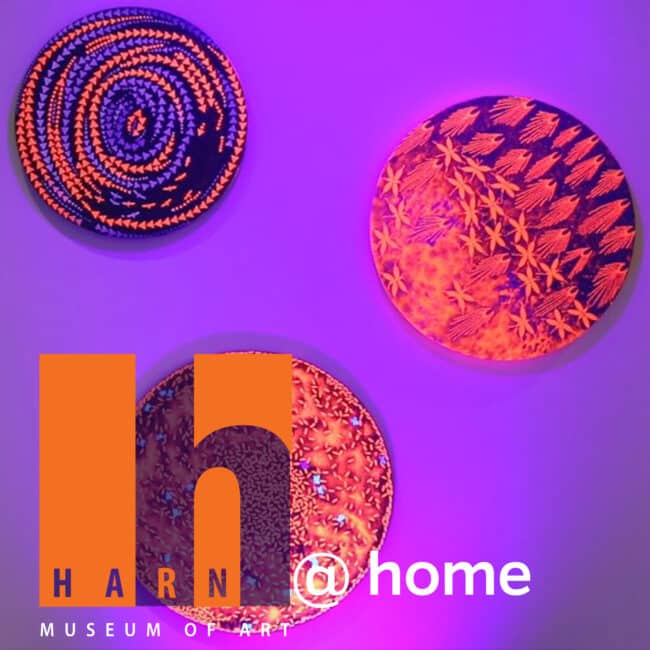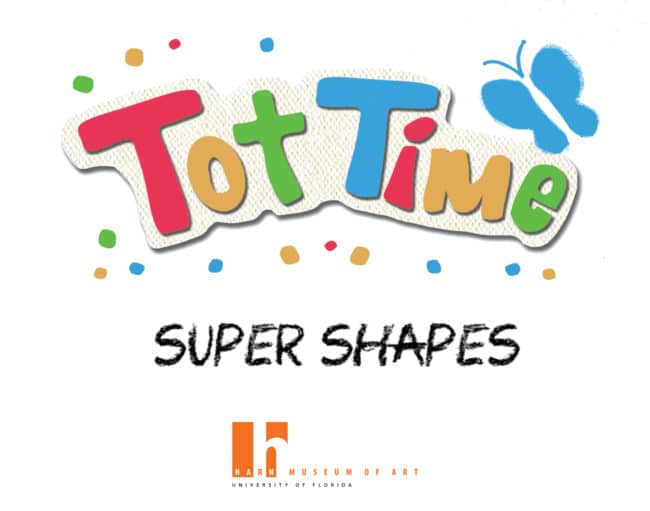Follow the Family Day: Art Time! presentation to experience a virtual tour of Tempus Fugit :: 光陰矢の如し:: Time Flies with Allysa B. Peyton, Assistant Curator of Asian Art, and an at-home printmaking tutorial with Paige Willis, Early Learning, Intern and Family Programs Coordinator. Browse through the links in the slides to explore four works of art from the exhibition and to participate in two art-making activities.
Art Time! Printmaking Activity
Definitions:
- Printmaking Matrix: A matrix is an object on which a design is created to print from.
- Relief Print: A relief print is a technique where a design is carved and cut away from a printmaking matrix to leave a raised surface that is inked and printed. Common relief printmaking matrixes include wood and linoleum blocks.
- Collagraph: A print technique where materials are added to a printmaking matrix to create a raised surface that is inked and printed.
Styrofoam Relief Printmaking
What You’ll Need
- Styrofoam
- Pencil
- Washable markers
- Water
- Sponges
- Paper
What You’ll Do
1. Find your matrix. Find a flat piece of Styrofoam to use as your printmaking matrix. The piece of Styrofoam can be any shape or size as long as it has an even surface.
- Tip: At home, Styrofoam can be found in your fridge from an egg carton, take-out container or from a pack of vegetables. Make sure to wash the Styrofoam before using it! You may also find Styrofoam in a box as packaging materials.
2. Draw your design. Press into the Styrofoam with a pointy pencil to leave an indented mark. Pretend that you are carving into the Styrofoam by firmly dragging the pencil across the surface. Be careful not to apply too much pressure as it may result in puncturing the Styrofoam.
- When you draw into the Styrofoam, the pencil pushes the Styrofoam down creating recessed lines and raised surfaces. The raised surface becomes the printing image that is inked to create a print. The recessed lines do not retain ink and print as the color of the paper.
- Relief prints are a mirror image of the printmaking matrix. Your Styrofoam drawing will be printed in reverse. If your design includes words, then they will need to be written backward to print correctly.
- Trick: Explore variations of line widths and patterns to create texture.
3. Ink it. Use a washable marker to color the raised areas of the Styrofoam.
- Trick: Experiment with applying color to specific areas to create a multi-colored print or with mixing colors to create unique combinations.
4. Wet it. Use a moist sponge to wet a piece of paper until it is slightly damp. Wetting the paper brightens the colors in the print.
5. Press It. Flip the inked Styrofoam matrix over and press into the damp paper. Press down firmly on the entire surface of the Styrofoam using the palm of your hand to make sure that the marker fully transferred to the damp paper. Carefully lift the Styrofoam to reveal your print!
6. Repeat. Wipe the surface of the Styrofoam matrix with a clean sponge then repeat steps 3 – 5 to create a series of colorful prints!
7. Flatten your prints. When you are finished printing, let your prints rest until the paper is dry. The paper will likely curl and buckle from wetting it. To flatten your prints, place underneath a stack of books or another heavy material overnight. In the morning, your prints will be flat and wrinkle-free!
Collograph Relief Printmaking
What You’ll Need
- Cardboard, Chipboard or Mat board
- Scissors
- Glue
- Pencil
- Paint
- Paintbrush
- Paper Plate
- Water
- Paper
What You’ll Do
1. Find your matrix. Find a flat piece of board, like cardboard, chipboard or mat board, to use as your printmaking matrix. The board can be any shape or size as long as it has an even surface.
2. Cut out your design. Cut out shapes from a separate sheet of thin board.
- Tip: A cereal box is easy to cut with scissors. Cardboard may require a box cutter and an adult assistant to help supervise.
- Tip: Drawing your design with a pencil on to the thin sheet of board may be helpful in guiding how you cut out your shapes.
3. Create your design. Arrange the cut out shapes on your printmaking matrix. Play with your composition until you decide on a final design. Glue the shapes down.
- The glued cut out shapes create a raised surface on your matrix. The raised surface becomes the printing image that is inked to create a print.
- Relief prints are a mirror image of the printmaking matrix. Your board design will be printed in reverse. If your design includes words, then they will need to be cut backward to print correctly.
4. Time to dry. Allow 5 – 10 minutes to let the glue dry.
5. Ink your design. Using paint and a paintbrush, apply an even amount of paint to the raised surfaces of the matrix.
- Trick: Experiment with applying color to specific areas to create a multi-colored print or with mixing colors to create unique combinations.
6. Press It. Flip the inked matrix over and press into a piece of paper. Press firmly on the surface of the matrix using the palm of your hand to make sure that the paint fully transferred to the paper. Carefully lift the matrix to reveal your print.
7. Repeat. repeat steps 5 – 6 to create a series of colorful prints!



